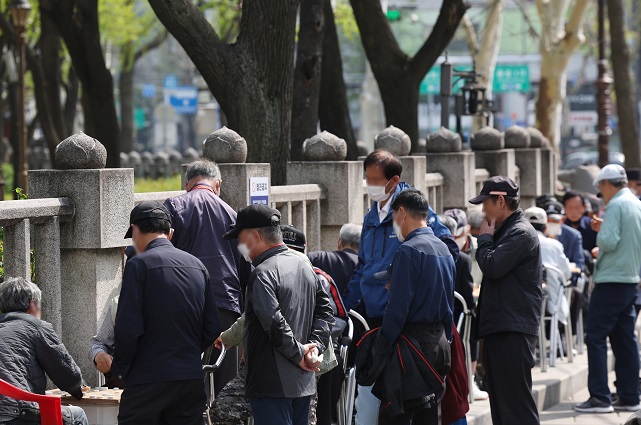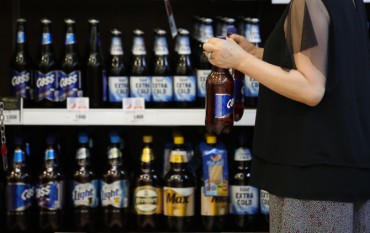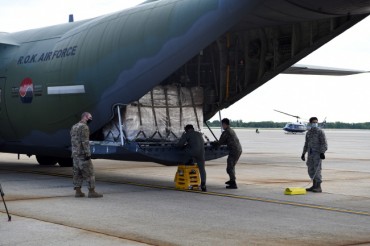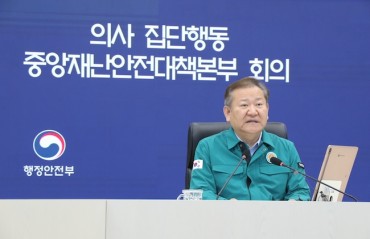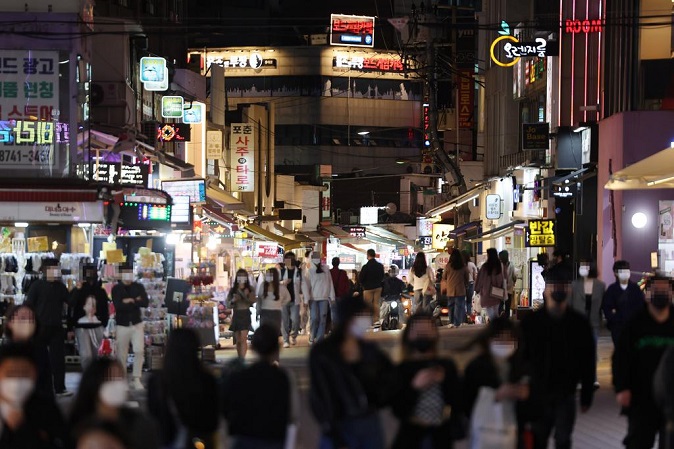
A street in Hongdae, one of the busiest entertainment districts in Seoul, is crowded with people on April 13, 2022, as South Korea moves to ease antivirus social distancing rules. (Yonhap)
SEOUL, April 13 (Korea Bizwire) — South Korea’s new COVID-19 cases fell below 200,000 on Wednesday, continuing the downward trend after last month’s peak, with the government set to further ease virus curbs to regain normalcy.
The country added 195,419 more COVID-19 infections, including 37 cases from overseas, bringing the total caseload to 15,830,644, the Korea Disease Control and Prevention Agency (KDCA) said.
The latest tally is a drop from Tuesday’s 210,755, marking a steady decline in the virus curve from the March 17 peak of more than 620,000 when the omicron wave had gripped the country.
The death toll from COVID-19 came to 20,034, up 184 from the previous day. The fatality rate stood at 0.13 percent.
The number of critically ill patients rose by nine to 1,014.
As of 9 p.m., the country had added 144,512 new virus cases, down 47,565 from the same time the previous day, according to data compiled by city and regional governments.
Daily COVID-19 infections are counted until midnight and announced the following morning.
The government will announce adjustments in social distancing later this week in a step toward bringing everyday life back and normalizing the medical system to pre-pandemic days, Health Minister Kwon Deok-cheol said.
The current antivirus curbs are supposed to expire Sunday.
“The government will adjust the quarantine measures step by step so as to help revive the economy and the everyday life of the people,” he said at a virus response meeting.
Sohn Young-rae, a senior health ministry official, dismissed the view that such steps would mean South Korea has achieved herd immunity, saying that it is difficult to declare an end to COVID-19 and uncertainties always remain over a new type of virus variant.
“It means that a large-scale virus wave like this time is highly unlikely in the coming days since many of us have been infected, or vaccinated and experienced the virus wave,” Sohn said.
“We believe that it will continue to be maintained by repeating small-scale outbreaks, and we expect to see South Korea and the rest of the world continue to go through the transition of living with COVID-19,” he said.
The government is mulling an option of fully lifting the cap on private gatherings and the business hour curfew on restaurants, cafes and other businesses, according to sources.
Currently, a maximum of 10 people are allowed for private meetings, and such businesses can operate until midnight.
The government is also reviewing whether to ease the outdoor mask-wearing mandate, which is now a must when two-meter social distancing among people is not possible, and when people gather to hold protests and other events.
“As we’ve seen a marked fall in new infections recently, lifting the restrictions appears to be possible,” a KDCA official said. “We will gather opinions from different circles to come up with optimal ways.”
Some, however, have voiced opposition to such relaxation.
Presidential transition team Chairman Ahn Cheol-soo said earlier in the day it is too hasty to lift all curbs, as such decisions are feared to give wrong signals to the people about the situation and further spread the virus.
The government will start the second booster shot program for elderly people aged 60 and over in efforts to reduce critical cases mostly found in the age group, which is more prone to virus infection.
Over 90 percent of people in their 60s and older have already been vaccinated with their first booster shots, but they are strongly recommended to get a second shot, given that the effect of the vaccine significantly starts to diminish about two months after the last shot.
“We have found the antibody grows by more than 18-fold in patients who have been vaccinated with a fourth shot for at least a month, compared with those who have been vaccinated with third shots for four months,” KDCA Commissioner Jeong Eun-kyeong said in a briefing.
About 10.66 million people in the age group will be subject to the second booster shot program, Jeong said.
About 2.61 million people aged 60 and over have been infected with COVID-19, accounting for about 20 percent of the age group.
The second booster shots, or fourth COVID-19 vaccines, have only been administered to high risk groups, like elderly people staying at senior care hospitals or those with weak immune systems.
The KDCA also recommended people receive the first two vaccine shots and a third shot even after they have had COVID-19, citing increased immunity.
As of midnight Tuesday, 44.51 million, or 86.8 percent out of the population, had fully been vaccinated with two shots, and 32.94 million had received booster shots, representing 64.2 percent, the KDCA said.
(Yonhap)


